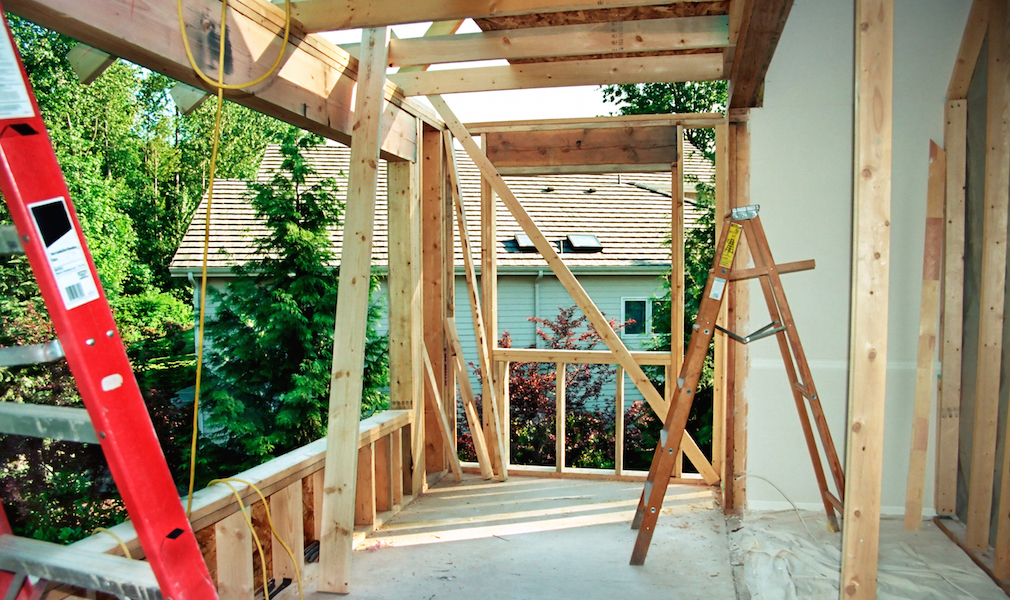New home construction increased slightly in April, but a drop in the multifamily sector caused housing starts to fall, according to the latest report from the U.S. Census Bureau.
Privately owned housing starts decreased in April to a seasonally adjusted annual rate of 1.29 million, down 3.7% from March’s 1.37 million. However, this is still up 10.5% from the annual rate of 1.17 million in April 2017.
But the decrease from March to April was driven by a fall in the multifamily sector. Single-family housing starts increased 0.1% month-over-month to a rate of 894,000, up from 893,000 in March.
One expert explained why, though single-family construction increased, it is still not enough.
“We saw 894,000 single-family housing starts in April, a slight step up from an upwardly revised March figure,” realtor.com Chief Economist Danielle Hale said. “We remain significantly behind a normal level of 1.2 million starts.”
“In fact, if single-family starts continue at the strong yearly growth rate we saw in April, it will be fall 2019 before annual single-family starts break the 1 million mark consistently, which is still 17% lower than normal,” Hale said.
However, another expert, who served as Fannie Mae’s chief economist for more than 20 years, took a more positive view of the report, pointing out that the numbers are up from last year.
“Starts for all of 2017 were 1.2 million units, so even this drop continues to put the pace of starts for 2018 well above last year,” Nationwide Chief Economist David Berson said. “Importantly, single-family starts were little changed suggesting that higher mortgage rates have had no negative impact on builders.”
The pattern was much the same for building permits, which decreased from March but increased annually. Privately owned housing units authorized by building permits dropped 1.8% from 1.38 million in March to a seasonally adjusted annual rate of 1.35 million in April. This is up 7.7% from 1.26 million in April 2017.
Once again, the monthly drop was led by the multifamily sector, as single-family authorizations increased 0.9% from 851,000 in March to 859,000 in April.
“More states and municipalities are discussing easing zoning restrictions to allow more construction, underscoring the sometimes-desperate need for more housing in parts of the country, but even if approved it will take years to bring housing relief to those areas,” said Robert Frick, Navy Federal Credit Union corporate economist.
“The number of permits and starts still is below historical averages, showing it will be at least several years until supply and demand reaches a better equilibrium,” Frick said. “Other data shows there is no softening for demand for housing, even given rising mortgage interest rates, which remain below historical averages.”
Privately owned housing completions increased 2.8% to a seasonally adjusted annual rate of 1.26 million in April, up from 1.22 million in March. It also surged a full 14.8% from 1.1 million in April 2017.
“An estimated seasonally adjusted annualized rate of 1.26 million housing units were completed in April, a 14.8% increase from the April 2017 figure of 1.22 million – a modest step toward producing enough housing to meet market demand,” First American Chief Economist Mark Fleming said.
Single-family housing completions, however, dropped 4% from 854,000 in March to a rate of just 820,000 completions in April.
“April’s drop in both new construction and permits for upcoming construction a frustrating waypoint given we are falling well short of meeting the demands for new housing,” said Bill Banfield, Quicken Loans executive vice president of capital markets.
“New homes are an important addition in neighborhoods across the county since many homeowners don’t want to list their home for sale out of fear of not finding a new home that fits their needs,” Banfield said. “This leaves eager first time buyers behind, competing for limited supply of homes.”






